Autonarrazione: Movement towards autonomy in community-driven narration
Autonarrazione is a joint project of the masters in Eco-Social design at the Free University of Bozen-Bolzano and the social cooperative OfficineVispa. Through research and two designed artefacts, the project aims to cultivate autonomous narration in a community, among ourselves, and fellow Eco-Social designers.
By exploring autonomy within narration,1 we developed an understanding of the non-autonomous nature of our stories and its implications.2 Our artefacts seek to facilitate critical reflection of these invisible frameworks that inform and shape transformative design.
Through a playful high-tech tin can telephone, a group process of practising generative conflict, and a regenerative design card deck,3 we critically examined how we conceptualise and tell the stories of ourselves, our communities, what matters to us, and how we believe the world works.

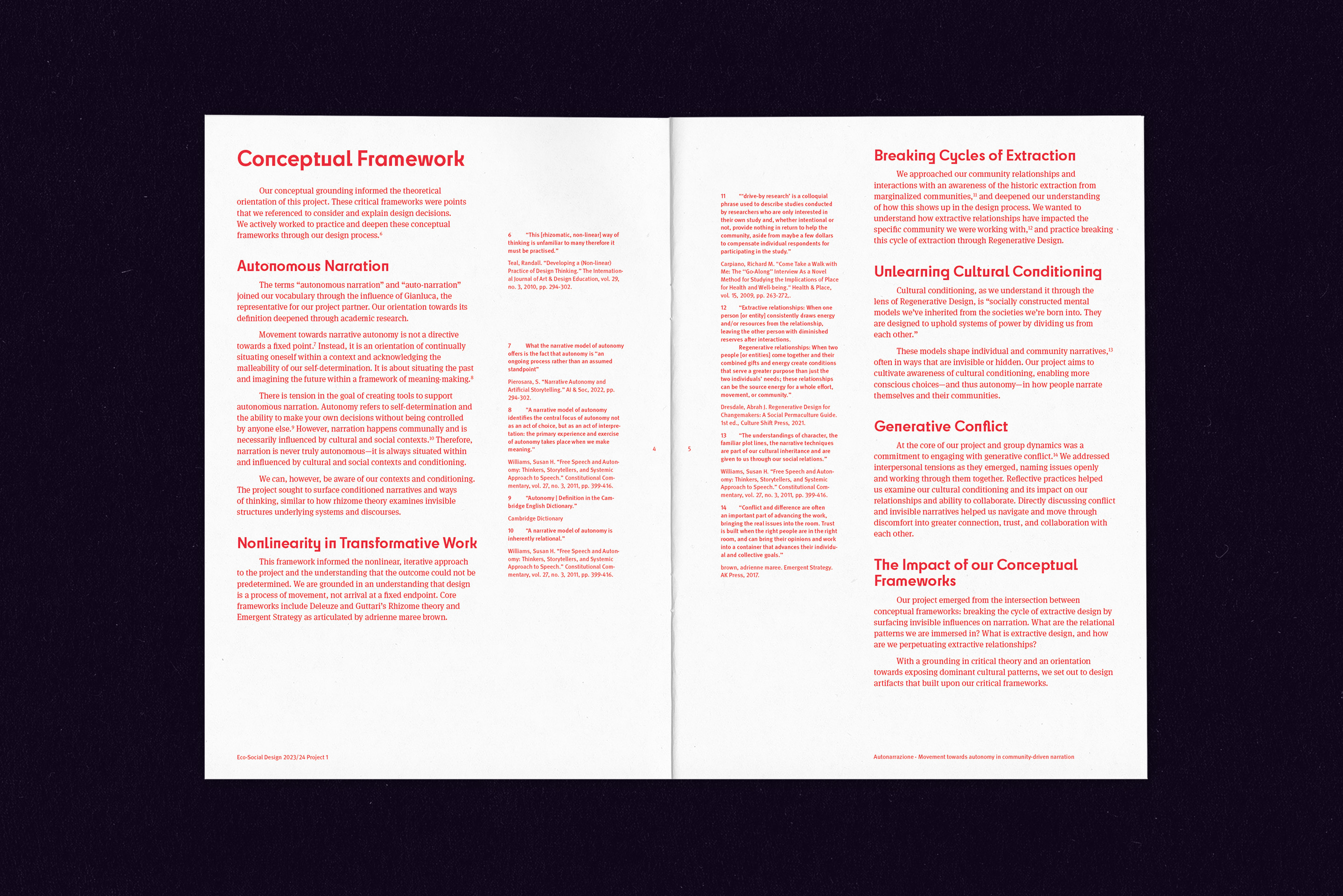

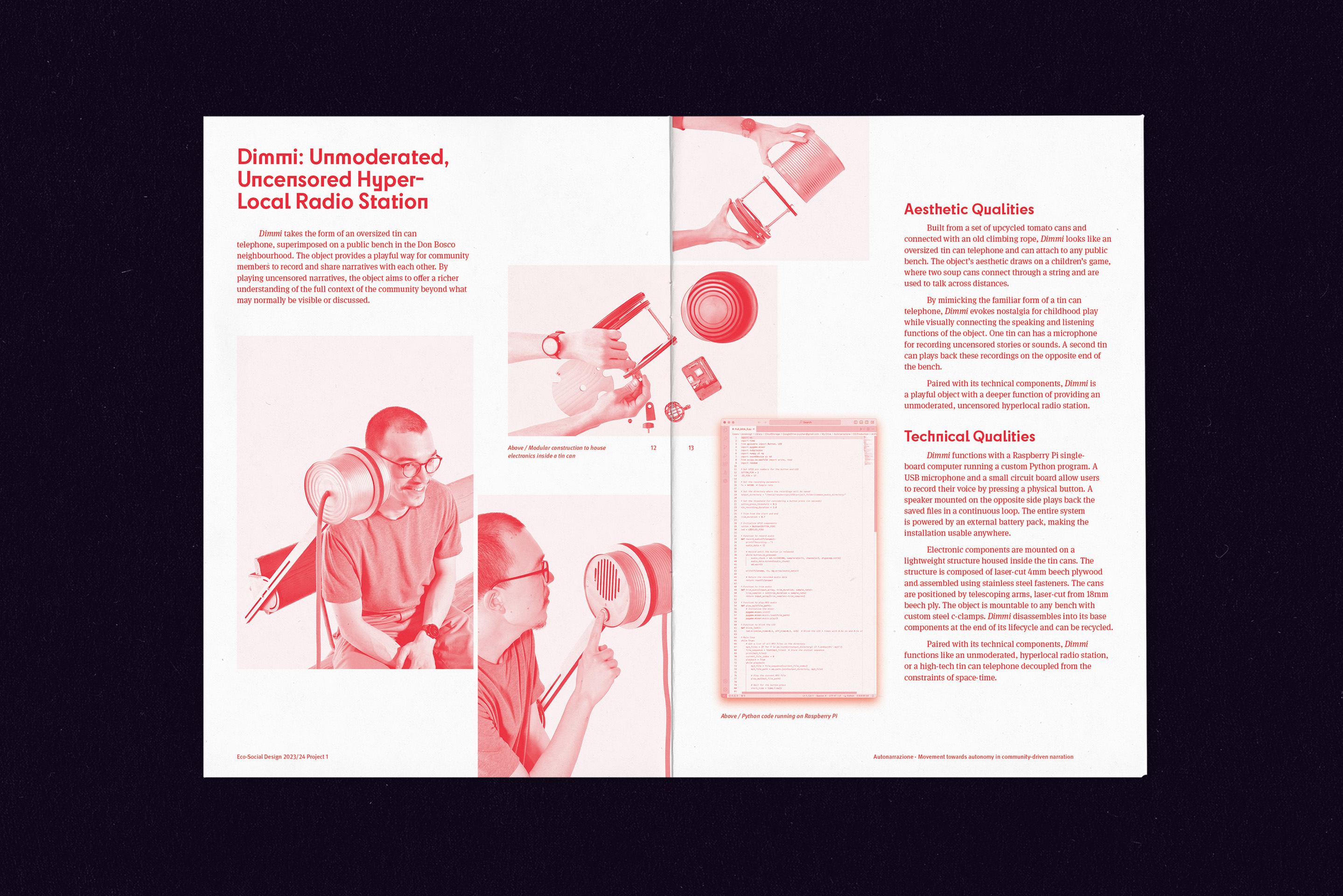
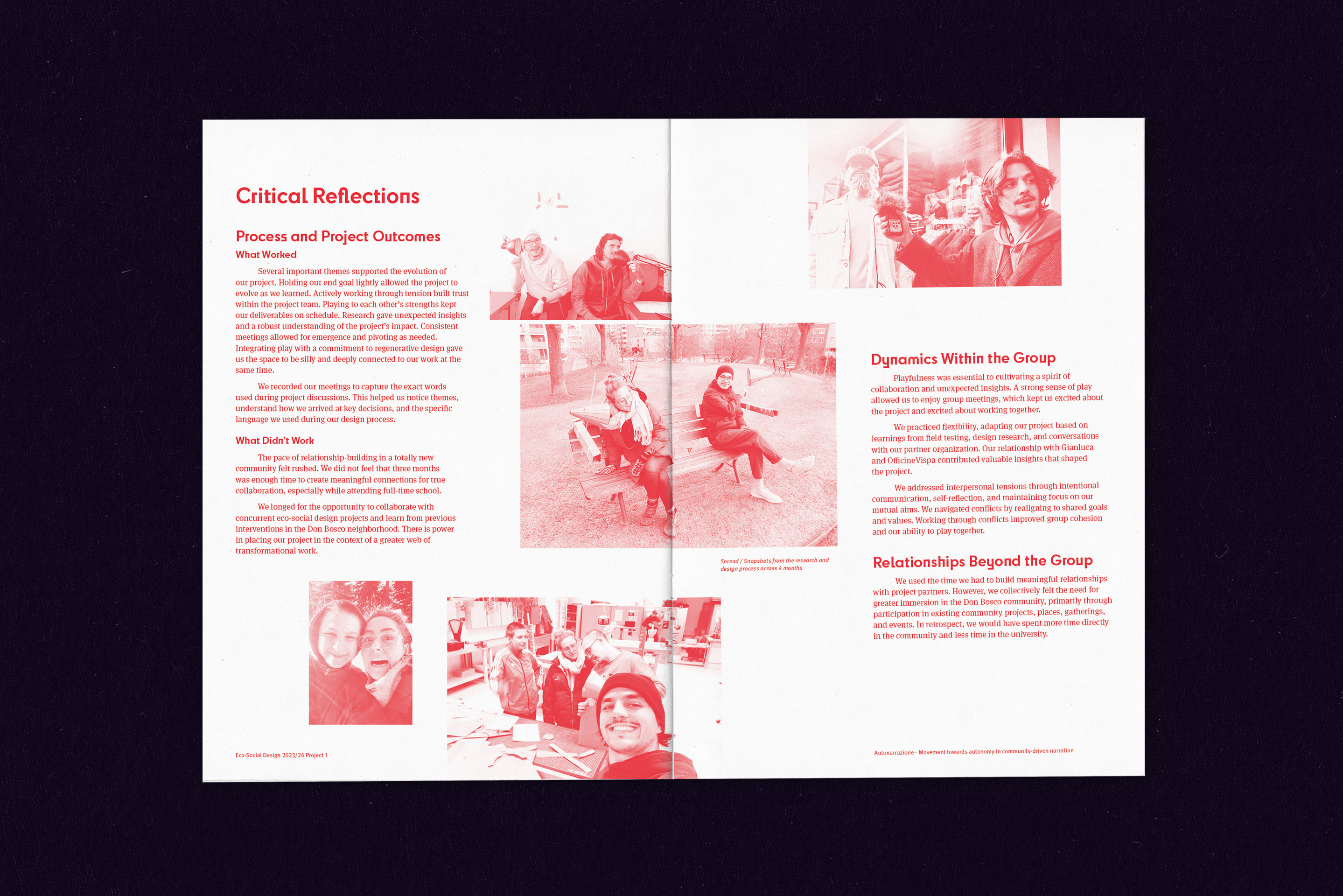
“…external narratives are a big issue felt by the inhabitants of Don Bosco—there is a distortion of narratives between the media and what they actually live. The risk is that people internalise this distortion and keep feeling like a minority or peripheral… an interesting goal is to make an important tool for a small community- a tool of expression and exchange, to stimulate the production of content by the inhabitants. So the community will be able to describe itself, by itself… Because this is something that we are suffering.”
Gianluca Tenin, OfficineVispaAutonomous Narration
The terms “autonomous narration” and “auto-narration” joined the project’s vocabulary through the influence of Gianluca, the representative for our project partner. Our orientation towards its definition deepened through academic research.
Movement towards narrative autonomy is not a directive towards a fixed point.4 Instead, it is an orientation of continually situating oneself within a context and acknowledging the malleability of our self-determination. It is about situating the past and imagining the future within a framework of meaning-making.5
Our project emerged from breaking the cycle of extractive design by surfacing invisible influences on narration. What are the relational patterns we are immersed in? What is extractive design, and how are we perpetuating extractive relationships?
With a grounding in critical theory and an orientation towards exposing dominant cultural patterns, we set out to design artefacts that built upon our critical frameworks.




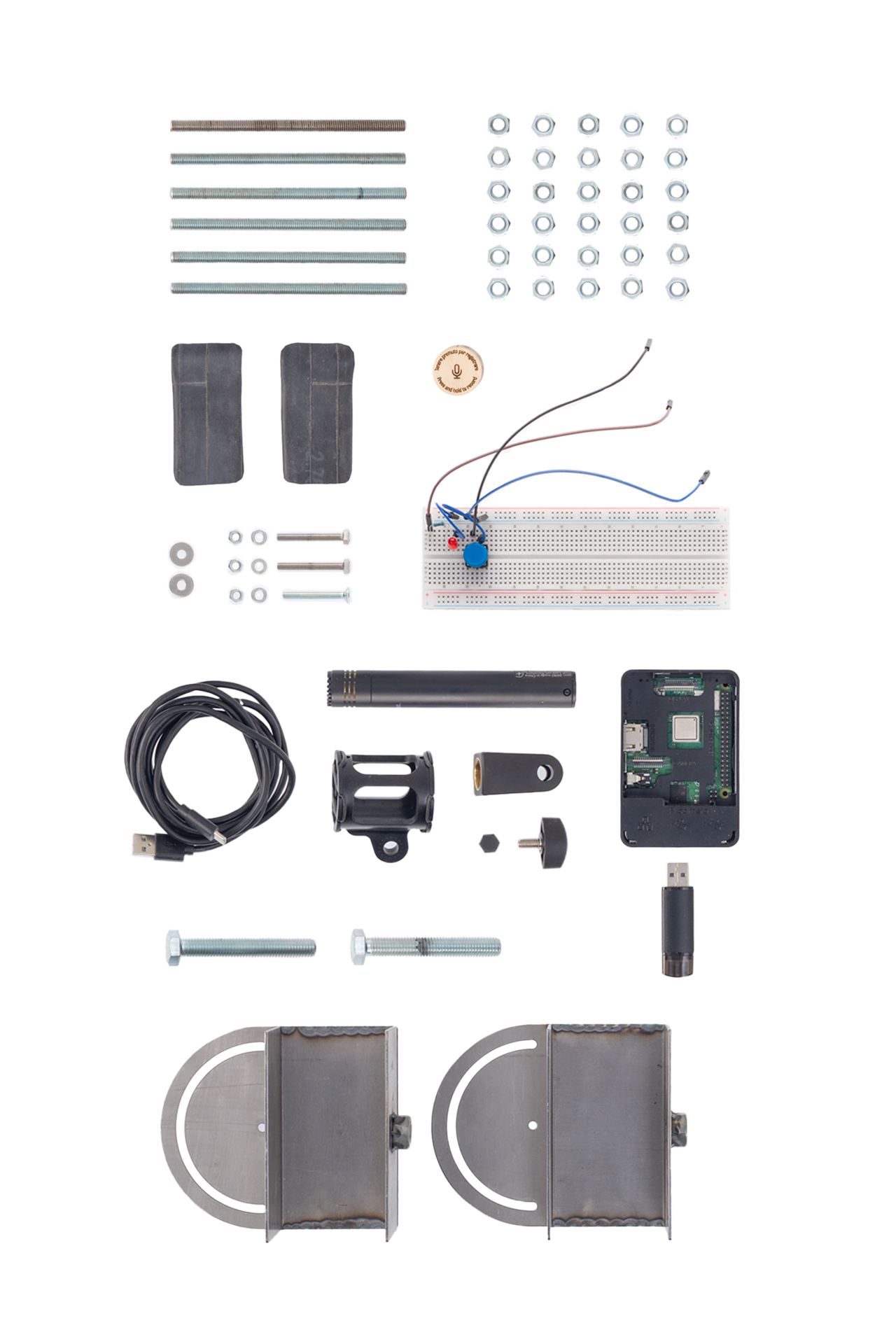


Dimmi: Unmoderated, Uncensored Hyper-Local Radio Station
Dimmi (Italian for "tell me") records and plays back sounds and stories offered by the public of Don Bosco. Part recording studio, part community radio station, and part sonic playground, the artefact takes the form of an oversized tin can telephone, superimposed on a public bench in the Don Bosco neighbourhood. Dimmi provides a playful way for community members to record and share narratives with each other.



Dimmi is powered by a custom Python program running on a Raspberry Pi single-board computer. A USB microphone and a small circuit board allow users to record their voice by pressing a physical button. A speaker mounted on the opposite side plays back the saved files in a continuous loop. The entire system is powered by an external battery pack, making the installation usable anywhere.
Dimmi serves as an outdoor, public, unmoderated, and uncensored place for exploring narrative autonomy. It aims to offer a richer understanding of the full context of the community beyond what may normally be visible or discussed.
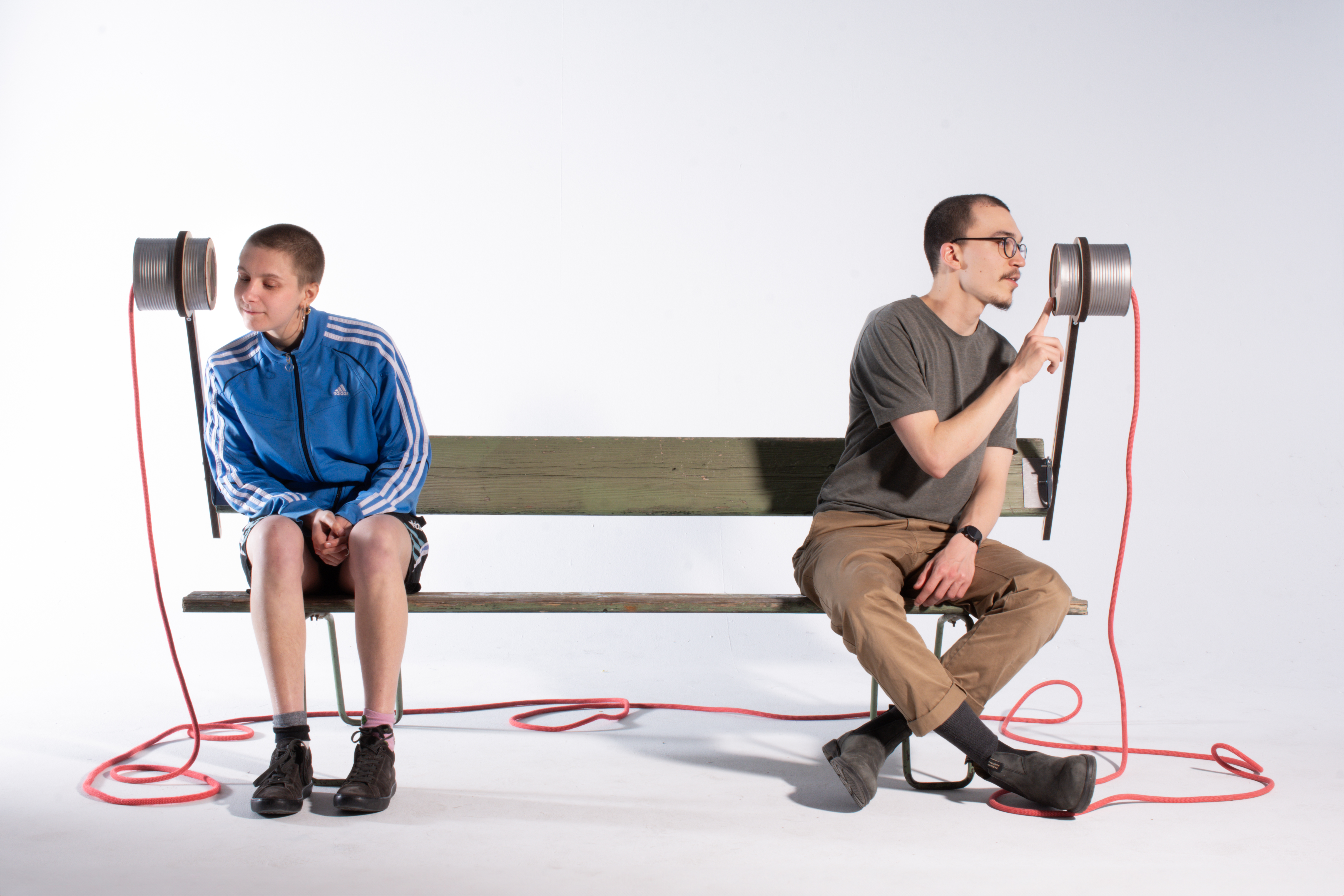
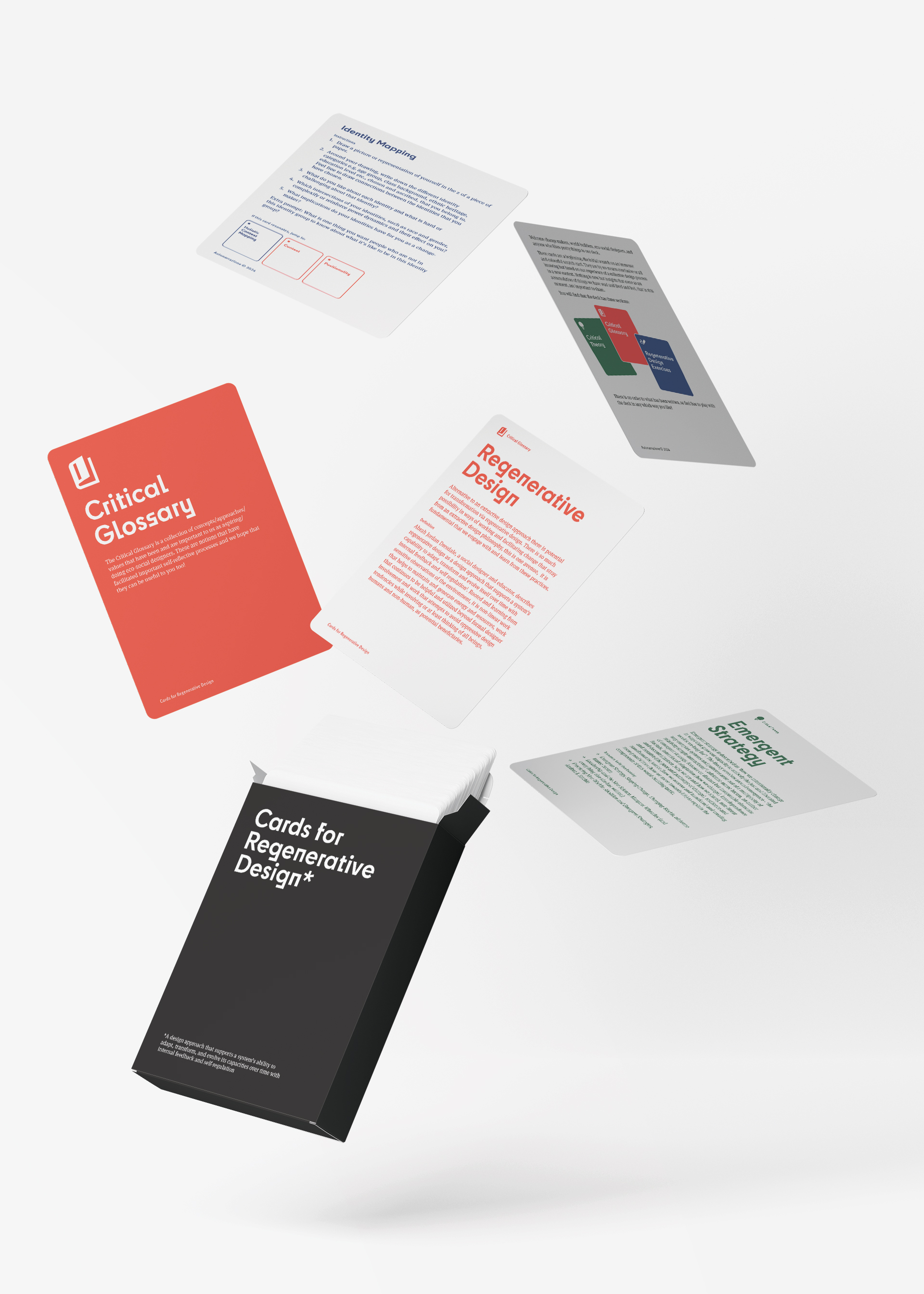
Cards for Regenerative Design
A second artefact of the project integrates critical theory and practice exercises to build designers’ capacity for transformative work. Created as a tool for self-reflection and self-contextualisation, the deck supports designers in understanding their positionality within power systems, identities, and cultural hierarchies.
The overall design aims to foster tangential, playful engagement with critical theory in contrast to more rigid formats like books or presentations. Each card type contains a tip for tangential engagement. At the bottom of the card, users are referred to additional cards in the deck that contain connected ideas.
The deck aims to make complex concepts for critical reflection accessible so designers can choose to work in new ways rather than unknowingly perpetuating extractive cycles. Cards for Regenerative Design aims to create the conditions for a ripple effect of eco-social transformation.6


Critical Reflection
There is tension in the goal of creating tools to support autonomous narration. Autonomy refers to self-determination and the ability to make your own decisions without being controlled by anyone else.7 However, narration happens communally and is necessarily influenced by cultural and social contexts.8 Therefore, narration is never truly autonomous—it is always situated within and influenced by cultural and social contexts and conditioning.
We can, however, be aware of our contexts and conditioning. The project sought to surface conditioned narratives and ways of thinking, similar to how rhizome theory examines invisible structures underlying systems and discourses.

View documentation
OfficineVispa
team
Filippo Maria Ciriani, Jonas Vogt, Charlie Maybe, Cedar Anne Schimke
Advisors
Angelika Burtscher, Karl Pircher, Sónia Cabral Matos
Documentation
Filippo Maria Ciriani
Case study text
Cedar Anne Schimke
with thanks to
Gianluca Tenin, Sergio Previte, Jenny Mitchell, Gabe Masiulis, Eli Silver, Jasmine Gutbrod, Ken Tyborski, Simone Lin, Nicola Hornäcker, Markus Fischnaller, Markus Kofler, Roland Verber, Christian Stufferin, Matthias Pötz, Daniel Tschurtschenthaler, Uwe Federer, Eva Bauer, Alexander Dornfeld Nelson

1 “The goal of autonomy in the [narrative] model is that one’s identity and life are not “the object or medium of someone else’s speech, [but rather] the subject of one’s own.” Williams, Susan H. “Free Speech and Autonomy: Thinkers, Storytellers, and Systemic Approach to Speech.” Constitutional Commentary, vol. 27, no. 3, 2011, pp. 399-416.
2 Narrative autonomy “is not something carried out independently. Rather, it is situated, contextual, and contingent; it is a symbol of our finitude, limitedness, fragility and exposure to events.” Pierosara, S. “Narrative Autonomy and Artificial Storytelling.” AI & Soc, 2022, pp. 294-30.
3 “A design approach that supports a system’s ability to adapt, transform, and evolve its capacities over time with internal feedback and self-regulation.” Dresdale, Abrah J. Regenerative Design for Changemakers: A Social Permaculture Guide. 1st ed., Culture Shift Press, 2021.
4 What the narrative model of autonomy offers is the fact that autonomy is “an ongoing process rather than an assumed standpoint” Pierosara, S. “Narrative Autonomy and Artificial Storytelling.” AI & Soc, 2022, pp. 294-302.
5 "A narrative model of autonomy identifies the central focus of autonomy not as an act of choice, but as an act of interpretation: the primary experience and exercise of autonomy takes place when we make meaning." Williams, Susan H. “Free Speech and Autonomy: Thinkers, Storytellers, and Systemic Approach to Speech.” Constitutional Commentary, vol. 27, no. 3, 2011, pp. 399-416.
6 “Location of self can be a helpful starting point in consciously engaging with the design process. In the context of regenerative Social Design, this initial orienting work is essential. We can learn to understand ourselves and our position in relation to various societal dynamics of history, power, and privilege so that we may become mindful designers, aware of the impact we have on the systems in which we thoughtfully intervene.” Dresdale, Abrah J. Regenerative Design for Changemakers: A Social Permaculture Guide. 1st ed., Culture Shift Press, 2021.
7 “Autonomy | Definition in the Cambridge English Dictionary.” Cambridge Dictionary
8 “A narrative model of autonomy is inherently relational.” Williams, Susan H. “Free Speech and Autonomy: Thinkers, Storytellers, and Systemic Approach to Speech.” Constitutional Commentary, vol. 27, no. 3, 2011, pp. 399-416.